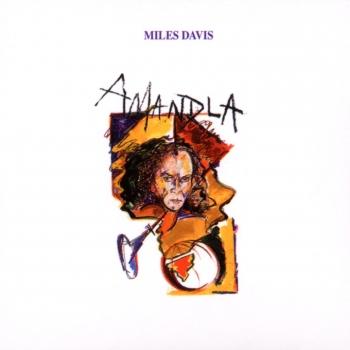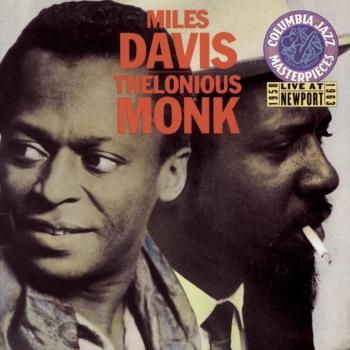
Collectors' Items (2016 Remaster) Miles Davis
Album info
Album-Release:
1956
HRA-Release:
25.02.2016
Album including Album cover Booklet (PDF)
I`m sorry!
Dear HIGHRESAUDIO Visitor,
due to territorial constraints and also different releases dates in each country you currently can`t purchase this album. We are updating our release dates twice a week. So, please feel free to check from time-to-time, if the album is available for your country.
We suggest, that you bookmark the album and use our Short List function.
Thank you for your understanding and patience.
Yours sincerely, HIGHRESAUDIO
- 1 The Serpent's Tooth 07:04
- 2 The Serpent's Tooth 06:21
- 3 'Round Midnight 07:08
- 4 Compulsion 05:49
- 5 No Line 05:42
- 6 Vierd Blues 06:55
- 7 In Your Own Sweet Way 04:35
Info for Collectors' Items (2016 Remaster)
Originally released in 1956, Collectors’ Items consists of two studio sessions recorded over roughly three years, with a menagerie of musicians taking part. Because of the amount of time between each session (1953 and 1956), fans will get an intimate peek into the artistic maturation of the esteemed artists who took part in the recordings. Sonny Rollins, Charlie Parker (who recorded under the name “Charlie Chan” to avoid contractual issues while under a rival label), Paul Chambers, Art Taylor and Tommy Flanagan were just some of the names who joined Davis in the studio. Collectors’ Items opens the studio doors to listeners, allowing them to take part in a moment—Charlie Parker trying out a new King tenor sax; Miles Davis informally improvising; the band recording “Round About Midnight” at six PM, due to the studio closing down for the night. Ira Gitler’s liner notes recall details like this—adding dimension and a context to the album’s tracks. This is most definitely a Collectors’ Item for any jazz fan.
„This set lives up to its title by including such interesting sessions as the 1953 date on which Miles Davis welcomed the two tenors of Sonny Rollins and Charlie Parker; other meetings with Rollins in 1951 and 1956; and a moody 1955 date with bassist Charles Mingus, trombone, vibes, and drums (a young Elvin Jones). Highlights include 'No Line,' 'Vierd Blues,' 'In Your Own Sweet Way,' 'Nature Boy,' and 'There's No You.' It's classic if often overlooked music from a variety of immortal jazzmen.“ (Scott Yanow, AMG)
January 30, 1953 session:
Miles Davis, trumpet
Sonny Rollins, tenor saxophone
Charlie Parker ('Charlie Chan“), tenor saxophone
Walter Bishop, piano
Percy Heath, bass
Philly Joe Jones, drums
March 16, 1956 session:
Miles Davis, trumpet
Sonny Rollins, tenor saxophone
Tommy Flanagan, piano
Paul Chambers, bass
Art Taylor, drums
Recorded January 30, 1953 (1-4) at WOR Studios, New York City, March 16, 1956 (5-7) Van Gelder Studio, Hackensack
Produced by Ira Gitler (tracks 1-4), Bob Weinstock (tracks 5-7)
Digitally remastered
Trumpeter Miles Davis grew up in East St. Louis, Illinois, just across the river from St. Louis, Missouri. His parents were affluent, and had the means to support his musical studies as a boy. He began playing the cornet at age nine, and received his first trumpet at around twelve or thirteen. He studied classical technique, and focused mainly on using a rich, clear tone, something that helped define his sound in later years.
As a teenager, he played in various bands in St. Louis, which was rich with jazz, as big bands often stopped there on tours throughout the Midwest and southern states. The most important experience he had was when he was asked to play in the Billy Eckstine band for a week as a substitute. The group included Charlie Parker, Dizzy Gillespie, and Sara Vaughan. After playing with these stars, Davis knew he had to move to New York to be at the heart of the jazz scene.
In Pursuit of Parker:
In 1944 Davis moved to New York City where he had earned a scholarship to study trumpet at the Juilliard School of Music. Upon arriving however, he sought after Charlie Parker, and meanwhile spent all of his time in jazz clubs listening to bebop. He was transfixed on the music, and grew utterly bored with his classical studies. After less than a year at Juilliard, he dropped out and tried his hand at performing jazz.
Although not particularly stunning, his playing was good enough to finally attract Charlie Parker, and Davis joined his quintet in 1945. He was often criticized for sounding inexperienced, and was compared unfavorably to Dizzy Gillespie and Fats Navarro, who were the leading trumpeters at the time. Both boasted stellar technique and range, neither of which Davis possessed. In spite of this, he made a lasting impression on those who heard him, and his career was soon set aloft.
Cool Jazz and a Rise to Fame:
Encouraged by composer and arranger Gil Evans, Davis formed a group in 1949 that consisted of nine musicians, including Lee Konitz and Gerry Mulligan. The group was larger than most bebop ensembles, and featured more detailed arrangements. The music was characterized by a more subdued mood than earlier styles, and came to be known as cool jazz. In 1949 Davis released the album Birth of the Cool (Captiol Records).
Change of artistic direction became central to Davis’ long and increasingly influential career. After dabbling in hard bop as a leader on four Prestige recordings featuring John Coltrane, he signed with Columbia records and made albums that featured Gil Evans’ arrangements for 19-piece orchestra. These were Miles Ahead, Porgy and Bess, Sketches of Spain, and Quiet Nights. He rose in popularity with these recordings, in part due to his signature sound, which he often enhanced by using a Harmon mute.
Kind of Blue and Beyond:
In 1959 Davis made his pivotal recording, Kind of Blue. It was a departure from all of his previous projects, abandoning complicated melodies for tunes that were sometimes only composed of two chords. This style became known as modal jazz, and it allows the soloist expressive freedom since he does not have to negotiate complex harmonies. Kind of Blue also featured John Coltrane, Cannonball Adderley, and Bill Evans. The album is one of the most influential in jazz, and is Columbia Records’ best-selling jazz record of all time.
In the mid 1960s Davis changed directions again, forming a group with Herbie Hancock, Wayne Shorter, Tony Williams, and Ron Carter. This group was known for the excellence of each individual member, and also for its unique performance approach. Each night the tunes would sound different, as the musicians would sometimes only loosely adhere to the song structures, and often transition from one right into the next. Each player was given the chance to develop his solos extensively. Like all of Davis’ previous groups, this quintet was highly influential.
Late Career:
Despite health problems, drug addiction, and strained personal relationships, Davis continued to play, changing his approach with each new project. In the late 60s and 70s, he began to experiment with electronic instruments, and grooves that were tinged with rock and funk music. Two famous recordings from this period are In a Silent Way and Bitches Brew. By the time the 1980s rolled around, Davis was not only a jazz legacy, but a pop icon, whose music, persona, and fashion style were legendary.
Davis died in 1991, as perhaps the most influential jazz artist ever. His vast body of work continues to be a source of inspiration for today’s musicians. (Jacob Teichroew, About.com Guide)
Booklet for Collectors' Items (2016 Remaster)



































